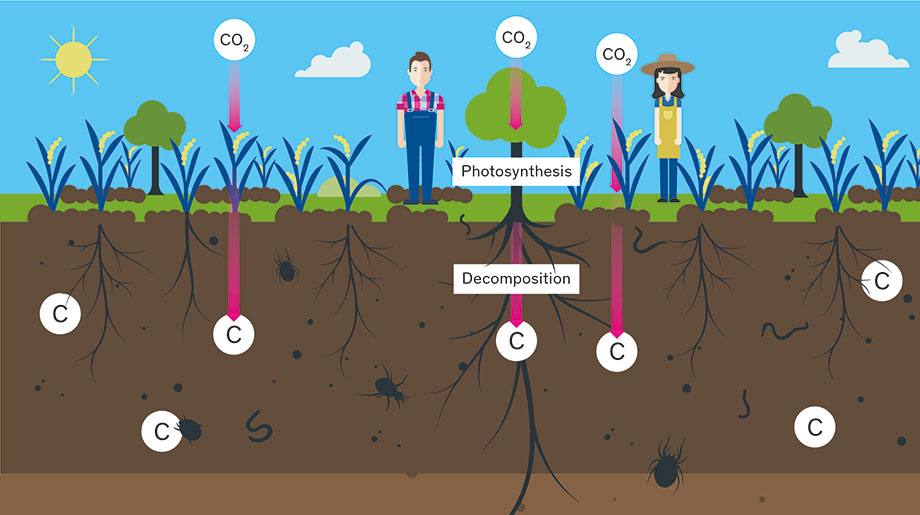What are negative emissions? Why is carbon dioxide removal (CDR) essential?
Negative emissions are also known as sinks; the technical name being Carbon Dioxide Removal (CDR). CDR processes are an integral component of all IPCC (Intergovernmental Panel on Climate Change) emissions scenarios (1.5° target) and also the net zero standard of the science-based targets initiative (SBTi). According to this, achieving net zero by 2050 requires the active removal of CO2 from the atmosphere. There are geochemical, technological and natural CDR processes. The latter is also called Nature Based Solutions.
Why are nature-based solutions important and the right thing to do?
Ecosystems such as forests and moors use photosynthesis to produce what we humans can only replicate with a huge outlay – converting CO2 from the air into captured carbon. Nature-based solutions represent an effective, globally available and affordable “technology” for CO2 capture – with additional positive environmental and biodiversity impacts. Natural sink projects don’t just contribute towards capturing CO2 but also towards adapting to climate change, to protecting biodiversity and securing the supply of food. They improve air quality and quality of life and protect against nature disasters. Last but not least, a reduction in deforestation also reduces the risk of zoonoses and therefore future pandemics.
Examples of myclimate sink projects at home and abroad
myclimate has been supporting and developing sink projects for a long time, both in Switzerland and the surrounding area as well as in more distant parts of the world.
Soil erosion and the loss of humus represent a major global problem, as well as locally here. The myclimate programme Fertile soil as a natural CO₂ sink in the Lake Constance region enables organic farmers in Switzerland, Germany, Austria and Liechtenstein to implement humus-enrichment measures. In addition to CO2, healthy soil also stores more water. It is therefore more resilient against climate change and contributes towards securing food supplies.
Another myclimate carbon offset project in the Mongolian steppe – right in the middle of a global biodiversity hotspot – aims to restore CO₂ capture in the largely degraded pasture land. Thanks to this project, agricultural and animal farming will be improved and important animal species protected alongside the CO2 sequestration. All these measures also increase biodiversity.
2021-2030: UN decade on ecosystem restoration
With these and other nature-based solution projects, myclimate is making a contribution towards the UN Decade on Ecosystem Restoration, which officially started on 5 June. With this programme, the United Nations want to remove no less than 26 gigatonnes of greenhouse gases from the atmosphere between 2021 and 2030.
